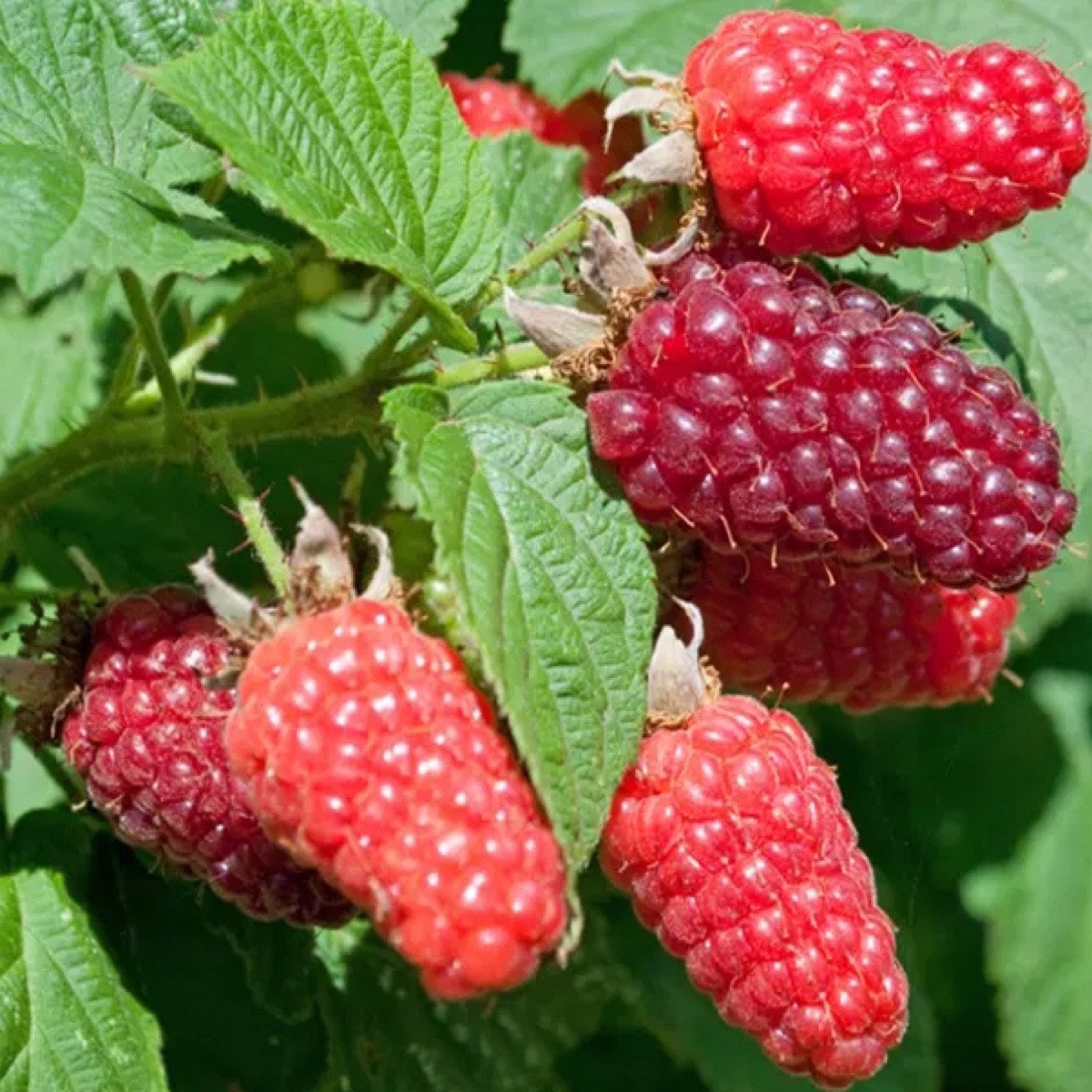Heritage

Variety
Heritage
created by Ninchen28 at 26.02.2025
Features
Color
red
leaves: Autumn leaf coloration
Resistances
cold tolerant
drought tolerant
heat resistant
maggot-free
Winter hardy
Taste
aromatic
fruity
sweet
raw edible
Edible
Fruit shape
oval
elongated
very large
Growth habit
growth habit: high
growth habit: runner-forming
growth habit: bushy
growth habit: upright
Autumn variety
lifespan: perennial
flower: flowering
root type: shallow-rooted
self-fruiting
leaves: Deciduous
fast growth
Location
planting: bed
planting: outdoor
light: sunny to semi-shady
soil moisture: no waterlogging
Planting: hedge
Season Overview
Sowing
Harvest
Harvest
J
F
M
A
M
J
J
A
S
O
N
D
1ST YEAR
FOLLOWING YEARS
Description
The raspberry 'Heritage' enriches every orchard and impresses with exceptionally sweet and fruity berries. They can be used in many different ways in the kitchen. No one can resist these fall fruits. The majority of the berries probably go straight from the bush into the mouth as a healthy snack. The (bot.) Rubus idaeus 'Heritage' is a variety that is undemanding and easy to care for. If you combine it with early-bearing raspberries in the garden, you can achieve a long harvest of the much sought-after garden fruit. Gourmets can enjoy the delicious berries of 'Heritage' until October. The red and healthy berries are a delicious addition to many desserts and cakes. A fruity raspberry tart is quickly conjured up with the fruits of this variety. The ambitious amateur confectioner is all the more eager to bring the harvest from their own garden into the kitchen. The gourmet can make juice from the raspberries or use them to make delicious smoothies. The berries are ready for harvest in the fall. In sunny years, the fruits are ripe for eating from August, but the last berries are usually ready for harvesting in October. This is how the 'Heritage' raspberry sweetens the arrival of autumn.
Non hybrid
Frostproof
Growing tips
As a self-fertile variety, this raspberry bush is suitable as a solitary plant in the garden. Gardeners can achieve higher yields by planting other raspberry varieties near Rubus idaeus 'Heritage'. Many of the beautiful creamy white flowers will then appear on this shrub. 'Heritage' delights with its flowering splendor from May to June. The foliage of this raspberry variety is a beautiful mid-green. It is a great contrast to the vibrant red of the delicious berries. They shine out between the notched, oval leaves, which are pointed at the front. The fruit shrub is undemanding and easy to care for. In order to provide the plant with the best conditions for optimal growth, the gardener should choose the location carefully. Rubus idaeus 'Heritage' prefers a humusy, loamy, deep and well-drained garden soil. Its roots do not tolerate waterlogging and drying out of the soil is detrimental to the shrub's ability to thrive. The quality of the fruit also suffers from a lack of water. For this reason, gardeners should make sure to water the plants sufficiently, especially during hot and dry weather. A fertilizer in the form of mature compost supports the plant in its growth and provides it with important nutrients. If the 'Heritage' raspberry is planted in a sunny to partially shaded spot, it will produce deliciously sweet fruit and develop into a strong and healthy fruit bush. With its medium to strong growth, it stretches upright into the air. The plant reaches a height of around 100 centimetres and generally does not grow beyond two meters. This should be taken into account when choosing a location. Immediately after the harvest period, the gardener cuts the canes a hand's width above the ground and creates space for healthy new shoots the following spring. Due to its good winter hardiness, it can withstand low temperatures and frequent frosts.
Details
Light requirement
Semi-shaded
Water requirement
Wet
Soil
Light (sandy)
Nutrient requirement
Low
Plant distance
40 cm
Row spacing
50 cm
Seeding depth
0Not specified
Companion Plants
Antagonistic Plants
Diseases
Root Rot
Pests
No pests